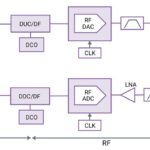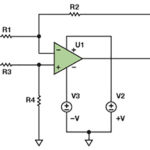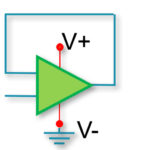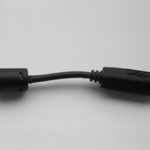Any unwanted signal that’s combined with the desired signal is called noise. In any circuit, noise can come from anywhere; from external systems as well as from within a circuit itself. External sources include a number of sources such as power lines, RF transmitters, nearby conductors, ignition systems, or motors that turn on and off drawing sudden large currents. Electromagnetic interference (EMI) is the noise caused by current in other, nearby conductors or cables. Radio frequency interference (RFI) is also a source of external noise caused by radiating signals from wireless systems. Something called cross talk is also external and is caused by nearby conductors or cables that are physically close enough to induce current in the affected cable.
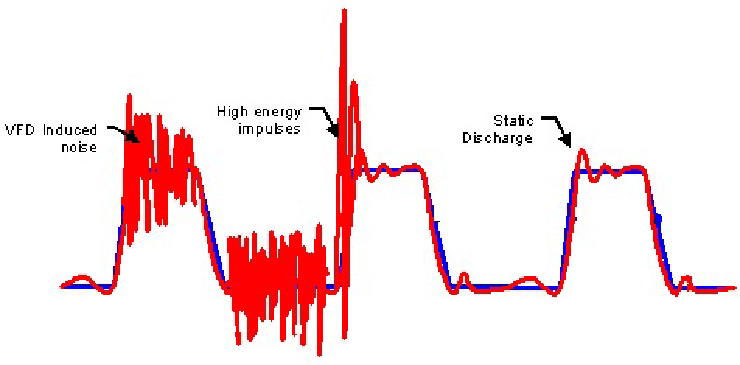
You can lessen external noise by applying physical shielding to wiring and ICs; shielding can prevent external electromagnetic radiation from inducing current in the shielded circuit. Recall that electromagnetic radiation refers to the relationship between magnetism and electrical current flow; they are interdependent. Motors and generators are in effect electromagnetic converters. When in a high-noise environment, an IC with a high degree of noise immunity can mitigate the need for special handling and care taken for the proper operation of a circuit. Other sources of external noise can be caused by lightning, which can cause catastrophic overvoltage to electronics, also known as voltage spikes.
The causes of noise can be from the circuit itself, an imperfect design or layout, noise generated by faulty components or loose connections, or switches in related circuits or in switching power supplies that feed the circuit. Even long leads can cause induced noise. One way to reduce internal circuit noise by reducing the length of the leads for I/O (input and output) as much as is practically possible. Providing filters, isolating transformers, chokes, circuit protection, and low-noise components are other ways to reduce the unwanted noise. A differential op amp has the best immunity to noise amongst op amps by design, for instance. The differential op amp has inherent immunity to external noise because the two input conductors to the differential op amp, if close to each other, experience the same interference. The noise that gets coupled into the conductors looks like a common-mode voltage to the op amp, and common-mode voltage is rejected in a differential op amp. The internal source of noise caused by switching circuits, for example, requires mixed-signal circuits to keep digital portions isolated from the analog portion of the circuit. The constant clocks and switching 0s and 1s can introduce noise to the analog portion of the signal. Keeping digital circuits from contaminating analog circuits with noise is a challenge because shared ground the circuit can be a source of noise on the analog side. Isolation, filtering, and physical distance are some common methods to reduce noise in the analog portion of a mixed signal circuit.
Another source of external noise includes environmental causes, such as physical vibration and increases in temperature. The internal noise of components is due to fundamental physical properties and can increase naturally due to high temperatures, and is called thermal noise. Thermal noise increases with an increase in environmental temperature. Thermal noise is also known as Johnson noise. Shot noise is another type of inherent noise fundamental to physical phenomena, which occurs as a result of charge carriers overcoming potential barriers, mainly due to fluctuations in the electrical current. Fundamental noise like the above is more of a concern in extreme circumstances such as in sensitive electronics at very high temperatures.

